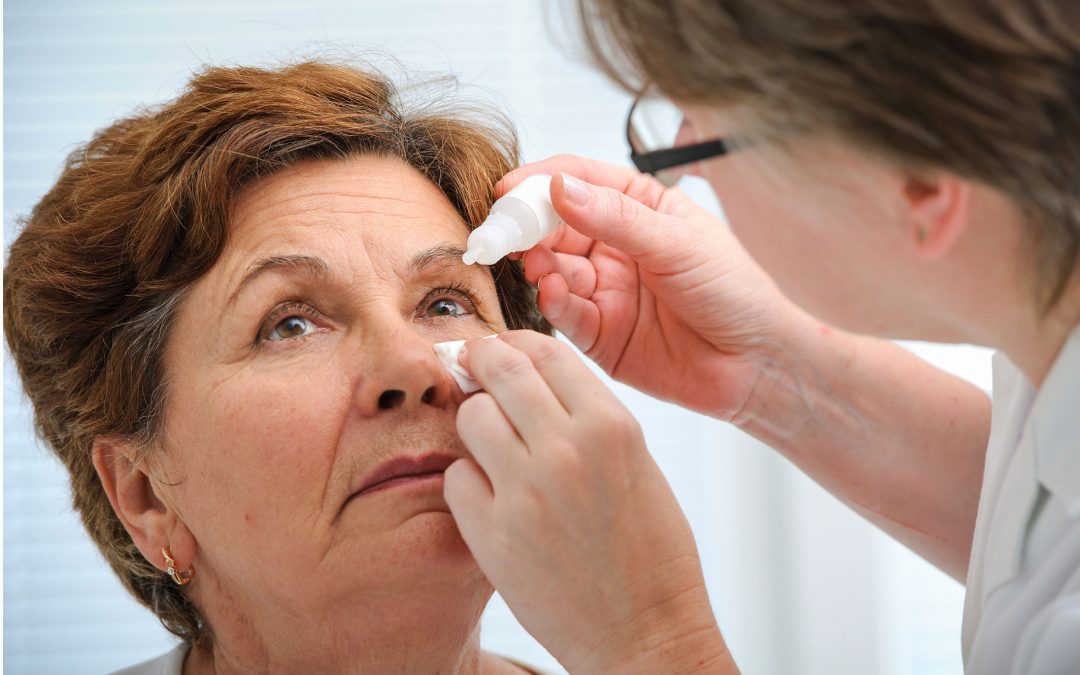The leading cause of visual impairment and blindness in the United States is the result of glaucoma, which affects individuals of all ages. Glaucoma is a disorder of the eye where the optic nerve is damaged and thus permanently damages vision in the eye that is affected. If untreated, this condition can lead to blindness so once a diagnosis of glaucoma is given, treatment should start immediately with medical care from a skilled and trained glaucoma doctor.
There is currently no cure for glaucoma; however, treatment focuses on preventing further damage and relieving symptoms of the disease. Certain pharmaceuticals are used to lower the intraocular pressure in the eye.
Medicines used to treat glaucoma lower the pressure in the eyes (intraocular pressure, or IOP) by either decreasing the amount of fluid produced by the eyes or increasing the amount of fluid that drains out of the eyes.
Medicines that are prescribed to glaucoma patients include but are not limited to:
* Beta-blockers such as Betagan, Betimol, Betoptic, Ocupress, OptiPranolol, and Timoptic
All beta-blockers work well and generally well tolerated. Because they cause less eye irritation than many other glaucoma medications, they are often prescribed for patients who also have cataracts. Systemic side effects may include reduced sexual drive, fatigue, depression, anxiety, and breathing difficulties. Beta-blockers affect the heart. They lower heart rate and reduce blood pressure. They can worsen severe asthma or other lung diseases. A patient switching to a beta-blocker from other glaucoma medication may feel a sudden rise in eye pressure. It is important that the pressure be checked shortly after the other drug has been withdrawn.
*Adrenergic agonists such as Alphagan, Epifrin, Iopidine, and Propine
Adrenergic agonists activate muscles in the eye that dilate pupils and, therefore, increase outflow of aqueous fluid. Newer variations called alpha 2-adrenergic agonists reduce production of aqueous humor and also increase outflow through the uveoscleral pathway (the alternative channel to the trabecular meshwork). The most common side effects of brimonidine and apraclonidine are dry mouth and altered taste. They also commonly trigger an allergic reaction that causes red and itching eyes and lids,. Brimonidine causes less of an allergic response than apraclonidine. Unlike apraclonidine, however, it can cause lethargy and mild low blood pressure.
* Carbonic anhydrase inhibitors such as Azopt, Diamox, Neptazane, and Trusopt
Carbonic anhydrase inhibitors (CAIs) decrease eye pressure by reducing the fluid in the chambers of the eye (aqueous humor). These drugs are used for glaucoma when other drugs do not work. They may be combined with other medications.
Eye-drop CAIs include dorzolamide (Trusopt) and brinzolamide (Azopt). About 10% of patients report fatigue, stinging in the eye, and loss of appetite using dorzolamide. Taste changes can occur. Brinzolamide is a newer medication that may cause less stinging than dorzolamide.
Forms taken by mouth (oral) include acetazolamide (Diamox), methazolamide (Neptazane), and dichlorphenamide (Daranide). Although they are more effective than eye drops, they have significantly more side effects and are rarely used for long-term treatment. The oral forms have very unpleasant side effects, including frequent urination, depression, stomach problems, fatigue, weight loss, sexual dysfunction, and, in infants, failure to thrive. Long-term use of the oral forms, in rare cases, can cause serious anemia and kidney problems, including the risk for stones. They can also produce a toxic reaction when taken with large doses of aspirin.
*Prostaglandin analogs such as Lumigan, Travatan, and Xalatan
Prostaglandins are hormone-like substances that help open blood vessels. Drugs that resemble prostaglandins increase outflow of aqueous humor (the watery substance in the eye). Drainage of aqueous humor helps reduce intraocular pressure. These drugs do not slow down the heart rate and also appear to be safe for people with asthma. Side effects include itching, redness, and burning during administration. Muscle and joint pain may also occur. All of these drugs may permanently change eye color from blue or green to brown.
In most cases, medicines used to treat glaucoma must be continued daily for the rest of your life. Putting eyedrops in the eye at specific times of the day may be inconvenient. Eyedrops may also cause discomfort. You need to follow the prescribed daily schedule for your medications and eyedrops in order for them to work properly.
Studies indicate that many patients skip doses of their glaucoma medications, sometimes because of side effects and sometimes because of confusing or time-consuming regimens. Skipping even a few doses can greatly increase the risk of visual loss. It is essential that patients tell their doctor if they are not regularly taking their medication. Otherwise, the doctor may increase the dosage, thereby causing unwelcome side effects. Patients who do not regularly take their glaucoma medication are at high risk for blindness. If you have problems taking your medications or sticking to the dosing regimen, talk with your doctor.
While there are fewer complications from the new surgical procedures for glaucoma, medicine treatment still usually has fewer side effects than surgery. Many people who use glaucoma medicines may never need surgery for glaucoma.


Recent Comments